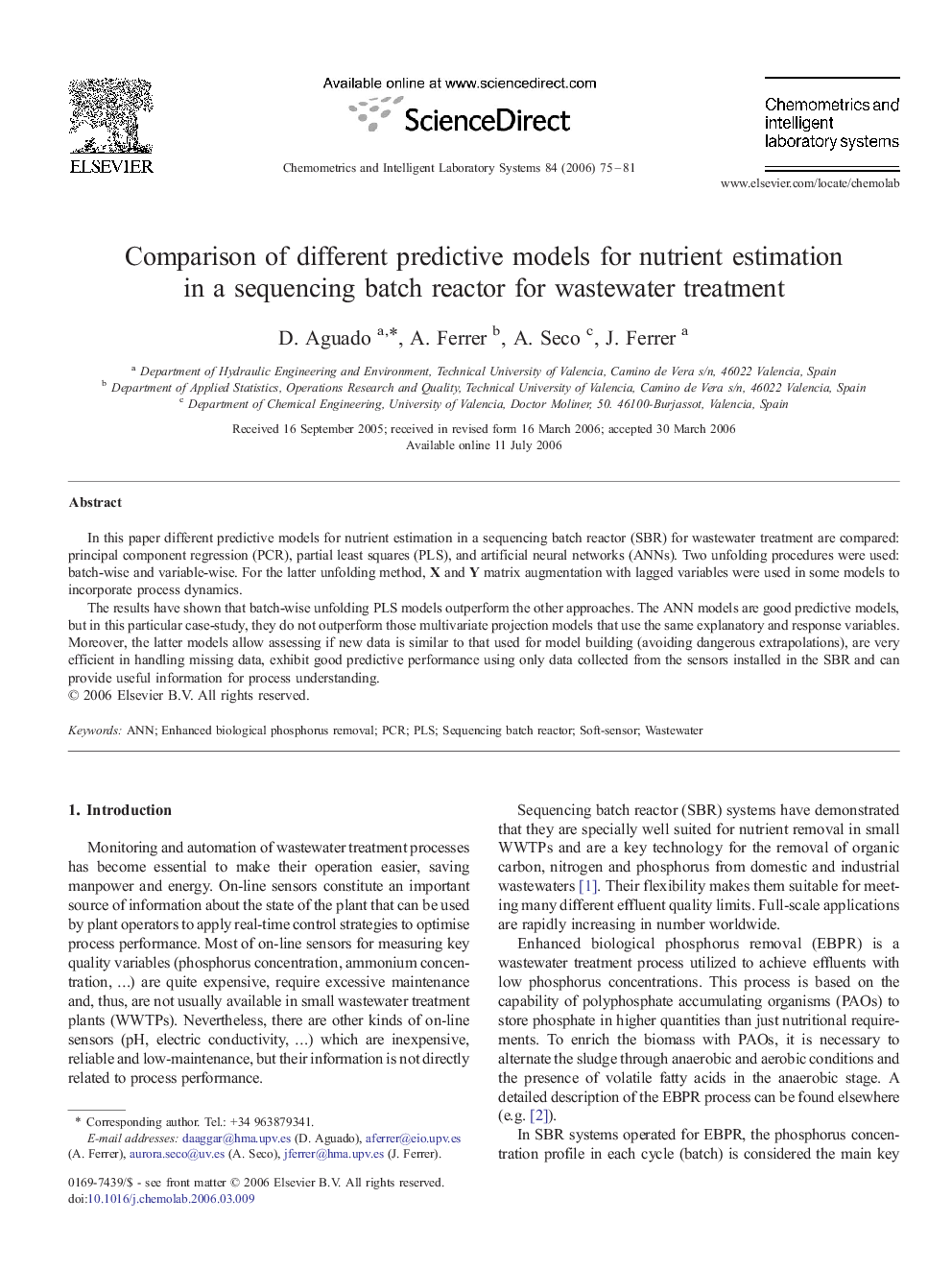| Article ID | Journal | Published Year | Pages | File Type |
|---|---|---|---|---|
| 1180805 | Chemometrics and Intelligent Laboratory Systems | 2006 | 7 Pages |
In this paper different predictive models for nutrient estimation in a sequencing batch reactor (SBR) for wastewater treatment are compared: principal component regression (PCR), partial least squares (PLS), and artificial neural networks (ANNs). Two unfolding procedures were used: batch-wise and variable-wise. For the latter unfolding method, X and Y matrix augmentation with lagged variables were used in some models to incorporate process dynamics.The results have shown that batch-wise unfolding PLS models outperform the other approaches. The ANN models are good predictive models, but in this particular case-study, they do not outperform those multivariate projection models that use the same explanatory and response variables. Moreover, the latter models allow assessing if new data is similar to that used for model building (avoiding dangerous extrapolations), are very efficient in handling missing data, exhibit good predictive performance using only data collected from the sensors installed in the SBR and can provide useful information for process understanding.
